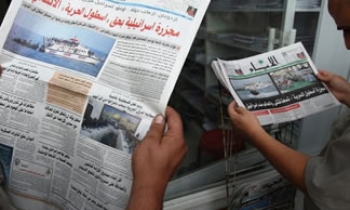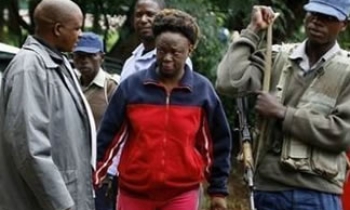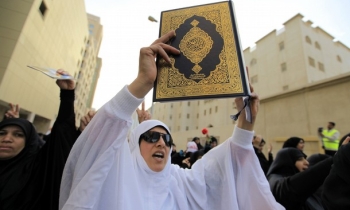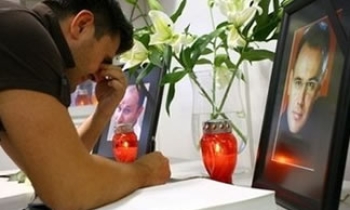Whatever other reasons may explain the lack of women’s voices on the nation’s op-ed pages, the lack of women asking to be there is clearly part of the problem. Many opinion page editors at major newspapers across the country say that 65 or 75 percent of unsolicited manuscripts, or more, come from men.
The obvious solution, at least to Catherine Orenstein, an author, activist and occasional op-ed page contributor herself, was to get more women to submit essays. To that end Ms. Orenstein has been training women at universities, foundations and corporations to write essays and get them published.
Uproars over the sparse numbers of women in newspapers, or on news programs, in magazines, and on best-seller lists regularly erupt every couple of years. A doozy occurred in 2005, after the liberal commentator Susan Estrich and Michael Kinsley, then editor of The Los Angeles Times’s opinion pages, got into a nasty scuffle over the lack of female columnists. That dustup is what motivated Ms. Orenstein to take her op-ed show on the road, which she has done with support from the Woodhull Institute, an ethics and leadership group for women.
“It’s a teachable form,” Ms. Orenstein said recently over coffee and eggs. “It’s not like writing Hemingway. You show people the basics of a good argument, what constitutes good evidence, what’s a news hook, what’s the etiquette of a pitch.”
Over the past 18 months several hundred women and men (though in fewer numbers) have taken the seminar, which can cost a group up to $5,000, Ms. Orenstein said (although she has also donated her services). She has not kept records, but said about two dozen former students have sent her clips of their published essays to say thank you. Suzanne Grossman at Woodhull didn’t have comprehensive statistics but said that the first pilot session for a dozen women at a Woodhull retreat produced 12 op-ed articles. (Some participants wrote more than one.)
“I try to convey the idea that there is a responsibility,” she said. “Op-ed pages are so enormously powerful. It’s one of the few places open to the public. Where else is someone like me going to get access? It’s not like I can call up the White House: ‘Hello?’ ”
About 30 women who also are not in the habit of calling up the White House gathered Monday evening for one of Ms. Orenstein’s seminars. Eighteen, mostly from nonprofit organizations, sat around a large conference table in Manhattan against a dazzling backdrop of New York City’s skyline at sunset, while a dozen or so listened in through a speaker phone in Washington.
They had been invited by SheSource, an online database of women experts, financed by the White House Project, a women’s leadership organization, Fenton Communications and the Women’s Funding Network.
Ms. Orenstein asked: Could every woman at the large rectangular table name one specific subject that she is an expert in and say why? The author of “Little Red Riding Hood Uncloaked: Sex, Morality and the Evolution of a Fairy Tale,” Ms. Orenstein began by saying, “Little Red Riding Hood” and writing the words in orange marker on an oversize white pad.
Of the next four women who spoke, three started with a qualification or apology. “I’m really too young to be an expert in anything,” said Caitlin Petre, 23.
“Let’s stop,” Ms. Orenstein said. “It happens in every single session I do with women, and it’s never happened with men.” Women tend to back away from “what we know and why we know it,” she said.
Next she asked the participants why they thought it important to write op-ed articles. Women shouted: “Change the world,” “shape public debate,” “offer a new perspective,” “influence public policy.”
“You are all such do-gooders,” Ms. Orenstein said laughing, “I love this.” She then proceeded to create another kind of list that included fame, money, offers of books, television series and jobs.
The Rev. Dr. Katherine Hancock Ragsdale, an Episcopal priest and the executive director of Political Research Associates in Boston, frowned. “It’s not why I do it,” she said.
That, Ms. Orenstein declared, is a typically female response: “I never had a man say, ‘That’s not why I do it.’ ”
“What I want to suggest to you,” she continued, is that the personal and the public interests are not at odds, and “the belief that they are mutually exclusive has kept women out of power.” Don’t you want money, credibility, access to aid in your cause? she asked.
Cristina Page, a spokeswoman for Birth Control Watch in Washington, leaned forward. “I’ve never heard anyone say that before,” she said. “What you’ve just said is so important. It’s liberating.”
Other attendees were similarly enthusiastic after the two-and-a-half-hour session. Maureen Lane, a professor at Hunter College and a member of the Drum Major Institute, a research think tank, had taken a longer version of the op-ed writing seminar about 18 months earlier. “It takes me a while to learn,” she said of her repeat visit. “This is not just ‘how you buy real estate and make a fortune,’ ” she said, “This is thought through.”
During the seminar Ms. Orenstein laid out a basic formula for writing a 750-word op-ed piece (with the caution that “common sense trumps everything I say”): a lead connected to a news hook, a thesis, three points of evidence, conclusion. And don’t forget the “to be sure” paragraph in order to pre-empt your opponents’ comeback, she instructed.
Then she handed out a few samples, including one that a student had published in The Washington Post after completing the training. Small clusters of women formed as they worked to trace the formula’s various ingredients in an op-ed article.
A bunch of women joined together on one side of the table to discuss an op-ed piece by Ms. Orenstein that appeared in June 2004 in The New York Times on the remake of the movie “The Stepford Wives.”
“The thesis is how we’ve internalized a piece of Stepford,” said Serena Fong, a member of Catalyst, a research organization for women in business.
Dr. Ragsdale said, “We started thinking that was the thesis,” but then decided that “the point is we haven’t come such a long way.”
“Is that the first point or the thesis?” asked Sai Pradhan.
Maybe there are two theses, someone helpfully suggested.
A few moments later Dr. Ragsdale noted, “I’m not a group exercise kind of person.” Afterward each group got up to present its conclusions. “Is there a to-be-sure paragraph?” Ms. Orenstein asked the first up.
Ms. Lane replied: “Yes, and it begins: ‘To be sure.’ ”
After the presentations Ms. Orenstein returned to the orange-colored words “Little Red Riding Hood” written on the pad, saying that if she had limited herself to that subject, her contribution to public debate would be about the size of a tack.
“I would have to reframe myself,” she said, drawing a triangle around the words. At each of the three points she explained how she set about enlarging her area of expertise: from Riding Hood to female heroines to women; from fairy tales to myths to stories we tell and are told; from the nursery to popular culture.
To close the evening she asked Sondra Harris, the director of corporate public relations at Charles Schwab, to stand by the pad and go through the same process. Ms. Harris walked to the easel and, as she spoke, Ms. Orenstein wrote, “Teaching women how to invest,” which quickly grew into three expansive categories, Money, Women and Power, that were wide-ranging and enticing.
As Ms. Page said, “You can definitely have a TV series come out of that.”









